Cybercrime Is on the Rise: Is Your Network Protected?
by Stephanie Faris on Thursday, May 11 12:00
 By the year 2021, cybercrime-related expenses are expected to reach $6 trillion, yet according to a study conducted by AT&T,
nearly half of all organizations surveyed haven't updated their security strategies in three years or more.
If you're one of those businesses, you may not realize that you're putting your business at risk.
By the year 2021, cybercrime-related expenses are expected to reach $6 trillion, yet according to a study conducted by AT&T,
nearly half of all organizations surveyed haven't updated their security strategies in three years or more.
If you're one of those businesses, you may not realize that you're putting your business at risk.
Criminals are getting more sophisticated and sneaky, which means that if you aren't regularly investing in the latest security, you're likely at risk.
Here are a few important details from AT&T's CEO's Guide to Data Security.
Encryption Is Essential
To deal with the increasing capabilities of hackers, security experts are finding more advanced ways to protect networks.
Identity and access management restricts remote access to employees, letting devices communicate with each other for authentication purposes.
Many consumer-facing applications now recognize when a customer attempts to log in from an unfamiliar device, but businesses are activating those features, as well.
This will ensure that employees can work remotely without compromising security.
Social Engineering
Along with many other experts in the industry, AT&T identifies social engineering as one of the top vulnerabilities in most organizational networks.
Criminals rely on employee negligence, from irresponsibility with passwords to falling for phishing scams. Don't assume your end users are aware of these dangers.
If possible, train everyone who accesses your network on responsible password practices, but you'll likely also need to manage things from the network side.
Analyze logs for suspicious user behaviors and set up your system to alert you for unusual downloads.
In addition to monitoring device access, also keep an eye on your physical security and ensure employee access badges are safeguarded.
The Mobile Risk
Almost every professional today conducts business using a mobile device at least part of the time. Unfortunately, AT&T finds that one-third of mobile devices have a medium-to-high risk of data exposure.
This is especially true of devices that don't have passcode protection or allow third-party app installs.
Network-connected mobile devices should require a passcode and be protected using the latest mobile security software.
If end users access the work assets, including emails, using personal devices, set restrictions on behaviors that will protect the network's integrity.
Threat Analytics
Businesses already rely on analytics to power their business decisions, but a new field has emerged that can help security teams keep their networks safe.
Threat analytics use recognized patterns to monitor the network and detect threats as early as possible. An increasing number of providers now offer this feature, including Cisco and Microsoft.
Over time, security administrators can gain insights into their environment that can help them strengthen firewalls.
They may even be able to use the information to determine which users may need more training.
IT administrators face increasing challenges as cybercriminals find new methods to circumvent their security measures.
Fortunately, software will advance until it can detect when an incident is likely to occur, learning to detect and alert administrators so they can take action.
But security professionals will always be the best defense against intrusions.
